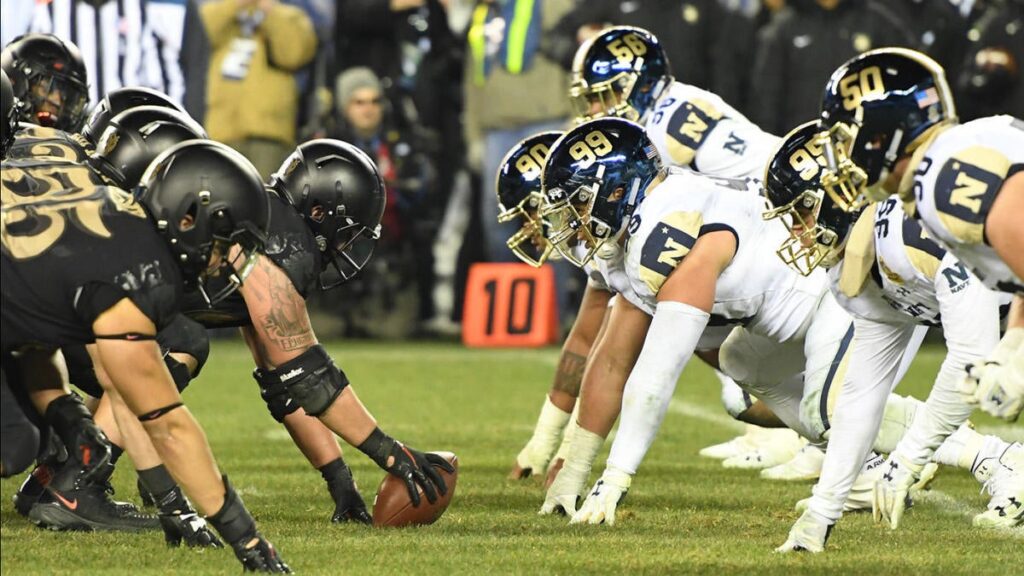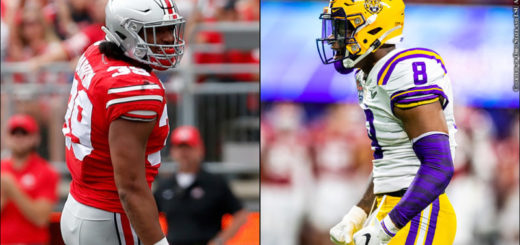Everything You Need to Know About Army ahead of Next Saturday
The wait is almost over. One of college football’s greatest rivalries is almost back. Who cares about the myriad of awkward conference championship games, college football playoffs, and major bowl games? Okay, maybe I do a little but that doesn’t detract from what we have coming up next weekend. This is Army-Navy and it exists on the fringes of what we’ve come to expect in college football. It’s a game steeped in tradition, hard work, hatred and respect. It’s one of the few times every year where we get a glimpse of offenses that have been evolved out of modern college football. For four hours, college football pauses and pays respect to the incredible sacrifice that the young men of each team make.
This year’s game is shaping up to be a great contest. Both teams look incredibly evenly matched and are built to win this game. Here is everything you need to know about Army heading into next weekend’s game.
A New Offense
The biggest storyline this year has been the evolution of Army’s offense. Head coach Jeff Monken brought in two tremendous football minds- Matt Drinkall from Kansas Wesleyan and Drew Thatcher from Nebraska Kearny- to serve as co-offensive coordinators and modernize the offense.
Make no mistake, you won’t see Army start throwing the ball down the field on nearly every play. This isn’t going to all the sudden become a west coast air-raid offensive scheme. Army is still an incredibly run heavy offense. In fact, it’s still a triple option offense. It’s just the manner in which Army gets to the triple option that is different this year.
It all starts with formation. In the past, Army would run a flexbone based triple option. It would stack a lot of players close to the line of scrimmage and rely on power football to gain any positive yards. This year, Army has switched to using a lot more spread formations. They almost always line up in shotgun and pistol sets, often with three or four receivers. This forces the defense to spread out more and allows Army to run into a less crowded defensive front and against smaller defenders.


Army has also started utilizing a lot more motion pre-snap. This allows them to get a sense of what coverage the defense is running and helps quarterback Bryson Daily with reading the defense. You’ll see them motion a running back out wide only to bring him back to where he started. This lets Daily know if the defense is playing man coverage if a linebacker moves out with the running back or zone if the entire defense shifts over.
Schematically, while it might look a lot different, make no mistake- this is still a triple option based team. It’s just how Army gets to the triple option that is different. Instead of making an initial read on whether or not to hand it off to a fullback then the quarterback making a pitch read with a slotback, Army has started utilizing more RPOs, Jet Motion reads, and slot options.
All of this is to say, Army is still putting the defense into binds and forcing defenders to make decisions that they can exploit. It’s just out of spread formations with RPO bubbles instead of traditional triple option runs. This puts more stress on the defense horizontally and opens up more big plays if Army can execute.
Army also still has the ability to run the triple option from traditional flexbone looks if they want to. They typically do this when they want to control the clock. It isn’t something we’ve seen much this season, but they used it a lot in their last game against Coastal Carolina. Whether or not we see it in next Saturday’s game is uncertain, but it is something to be aware of.
Army Defense
For the last two years now, this is an Army defense that has been better at defending the pass than the run. That’s significant for Navy given that they have placed an emphasis on passing the ball a little bit more this season. Navy still runs the ball 75% of the time, but if they do try and pass it in this game, the Army defense has shown the ability to shut it down over the course of the season.
The other concern for Navy is that the one game Army played really well against the run was in the Air Force game when they were defending the triple option. Army played incredibly disciplined and aggressive and held Air Force to one of their worst offensive performances of the season.
Army is a 3-4 based defense that uses 4-2-5 nickel set to counter spread formations. This allows Army to disguise blitzes and coverages when they want to, making it harder for the quarterback to make a decision when passing. Army plays more zone than man coverage, but will use some zero pressure looks to try and get to the quarterback when they want to.
Momentum
Army is coming into this matchup off of three straight wins, including a massive upset over Air Force. Granted, the Falcons have lost their last four games of the season, it’s still an impressive feat for a team that was 2-6 going into the game.
Any time you implement a new offense, it takes time to get going. Generally, it isn’t until year 2 of a new system until it really gets going. Late in the season, it seems that Army is starting to gain more traction with this offense and find their rhythm. Getting into the game early and letting Army know that this will be a four quarter fight is a huge key for Navy in this game.
Key Players
- QB- Bryson Daily: The starting quarterback for Army came into this season with very limited playing experience. He only had 12 rushing attempts and one pass attempt (which was an incompletion). However, Daily has really excelled in this offense this season. He’s a tough and physical runner who has enough of an arm to make a lot of the throws he needs to in this offense.
- RB- Kanye Udoh: All of the running backs in this army offense have talent and the ability to make big plays. Udoh leads all running backs in rushing yards (436) and rushing attempts (86).
- FB- Jakobi Buchanan: Army’s 6’0, 250 pound fullback is a short yardage specialist. This Army offense likes to go for it on fourth and short a lot. When they do, they’re typically handing it off to Buchanan who has the ability to run over a defender and pick up a tough couple of yards.
- WR- Isaiah Alston/Noah Short: Army’s leaders in receiving yards (266) and receptions (18) respectively, both of these wide receivers have big play ability. They function similar to running backs in this offense, getting a lot of quick throws in space out on the perimeter. Look for one of these two guys to have a chance at making a big play in this game and stressing the Navy defense all day.
- MLB- Leo Lowin: The leader in tackles for Army’s defense (75), Lowin makes plays all over the field. He’s going to make it tough for Navy to run through the middle of the box.







